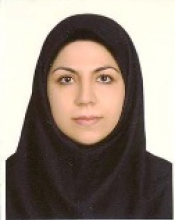Optimization of Water Distribution Networks using Genetic Algorithm and Fuzzy Logic
|
Student Name |
|
||
|
Supervisor |
Mohammad Reza Chamani Keyvan Asghari |
||
|
Date |
2009-03-05 |
||
|
|
-------- |
||
|
Keywords |
Fuzzy Genetic Algorithm Water Distribution Networks Fuzzy Decision System Pipes and Pipelines |
Abstract
Water Distribution Network (WDN) is one of the complex structures in all urban areas, industrial plants, and irrigation systems. Annual population growth boost the need of huge WDNs, make it inevitable to design WDNs which optimally meet performance and cost criteria. The optimal design of WDNs includes a cost objective function which is restricted by topologic, geometric, and hydraulic constrains. Due to the high performance in multi-objective analysis problems with complex objective functions, the GA has proved to be one of the most popular algorithms in WDNs optimal design problems.
This thesis considers the critical problem of the design, operation and optimization of Water Distribution Systems (WDS). As the first step, Genetic Algorithm as an evolutionary algorithm is used to design the optimal WDS and then Fuzzy reasoning is introduced to evaluate the penalty function for each potential solution. The model is applied to two well known examples, to benchmark the results. The first WDS has eight pipes arranged in two loops and is fed by gravity. In this problem, the decision variables are pipe diameters and the optimization problem is to maximize and minimize pressures in nodes and flow velocities in pipes. Using Genetic Algorithm showed that tournament selection and one point crossover are the best operators to reduce the convergence time and improve the fitness function.
Anytown is the next WDS example which is a hypothetical urban community that contains all hydraulic features of a real network. In this problem, the decision variables are pipe diameters, rehabilitation program, pump positions and their operational program, and also tank positions and their characteristics. The present work also includes a novel approach for the simulation of tanks as a network storage component within the Genetic- Fuzzy algorithm. In this way, a generalized fitness function that does not change with varying the dimensional characteristics, time and location is obtained. Fulfillment of the pressure and velocity constrains show the effectiveness of the Genetic- Fuzzy method. Comparison of results shows that using Genetic- Fuzzy algorithm significantly increases the computational cost. Thus, it is necessary to limit the number of Fuzzy parameters within the system.
